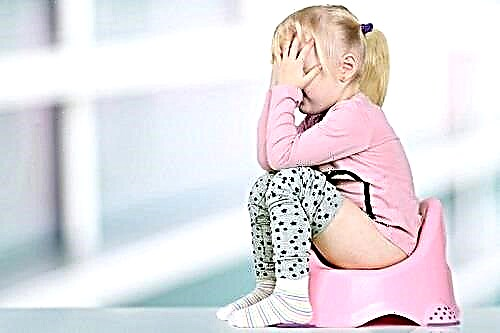
There is an opinion that only what is made with your own hands from natural raw materials is completely harmless. It is not for nothing that plywood toys have been in great demand lately - they are a hobby for adults and a guarantee of safety for kids.


Features and purpose
Plywood crafts do not have to be perceived only as toys - children will also like them, executed with high quality and diligence, but they have a number of other possible uses. In addition to fun for children, they are also great for the role:
- simple but non-trivial home decorations;
- decorative figures for variety and aestheticism in the garden;
- memorable gifts or souvenirs;
- bright Christmas tree decorations.


The popularity of plywood as a material is due to two major factors.
- First of all, plywood sheet has strength, which allows plywood products to keep a given shape for a long time, but at the same time plywood can be processed at home without much effort.
- Secondly, plywood is inexpensive, as are jigsaws with nail files, tools for burning and coloring.
In short, the production of such products is a hobby for everyone. It is not worth dreaming about such success in advance, but, having got the hang of it and getting your hand, over time, you can even make your favorite activity profitable - you can find a lot of craftsmen who sell their crafts on the Internet or even just on the market.


Varieties
Plywood toys can be divided into an impressive number of types - everything depends only on the skill of the manufacturer. Like almost any other material, in the right hands, plywood can take almost any form, and subsequent painting can turn the product into a real masterpiece of creative thought.
First, I must say that plywood toys can be either solid figures or prefabricated structures. A novice craftsman should hone his skill at first precisely on flat figures that are cut from a plywood sheet. This does not require any engineering thought and spatial imagination - the pattern is applied to the material, the contours are transferred, and then the outlined piece is simply cut out and, if necessary, painted.

Prefabricated toys are already an order of magnitude more complicated - they consist of several flat parts connected together. This category can include all complex plywood structures - for example, various doll houses, as well as furniture and utensils to them. The fastening of parts in simple examples is carried out with glue, but a groove-and-tenon connection will be more reliable, especially for dynamic children's games. In the latter case, the craft can be disassembled, and this suggests that even a full-fledged designer can be made of plywood.
Most of the crafts are stationary figurines - most often it is precisely an imitation of buildings or furniture, because a conventional man would not look very believable. Nevertheless, sometimes craftsmen also cut out products with moving parts - thanks to this, for example, the character's legs can swing, imitating walking.

However, the real squeak of fashion, which brought back the lost popularity of plywood, was mechanical toys... They were a response to the insane popularity of plastic mechanical toys, because children did not want to give up believable mechanics in favor of sustainable raw materials if they did not know how to drive themselves. Then several companies began to produce complex toys made of plywood, which are set in motion by the laws of physics - for example, pre- winding and gradually straightening elastic band. This is by far the most difficult type of plywood craft, but this is the level to strive for.


Due to the large variety of craft options, you can make both a purely decorative toy and an educational one - according to the principle of a business board for a child. By showing imagination or borrowing a good idea, you can create an object of your own pride.

Manufacturing in Russia
Carving toys from wood is one of the traditional folk crafts of our country, so modern craftsmen are by no means pioneers in this area. The main element of Russian toy craft is considered to be Bogorodsky toy - handicrafts from the village of Bogorodskoye, near Sergiev Posad. The production of figurines in this region has been going on continuously since at least the 15th century!

The Bogorodsk toy, however, has one radical difference from modern figurines - old crafts were carved from a voluminous piece of wood, they were not initially flat, so lovers of believability would probably like it more. However, nowadays plywood products are also popular - two-dimensional or assembled from two-dimensional parts.

Today in the Russian Federation there are several dozen companies involved in cutting and assembling plywood toys. All of them are relatively little-known (including because of the wild competition), but a real gourmet gets the opportunity to choose an article to his liking. Modern production is concentrated in the following cities:
- Moscow (Ogonyok toy plant, TROYS, Shusha, Tenth Kingdom company, production companies Prioritet and Umnichka, DELAR, Lesnushki, 123Toys and others);
- Kirov (Green Lion, Sandlight);
- Samara (Amusement Park, UniWood);
- Tomsk ("Timbergrupp", "Tom-Service");
- Yaroslavl ("Chudevo", "Tales of the Tree", "Lukomorye");
- Novokuznetsk (wooden manufactory of Alexander Gosteev, "Derevyasher");
- Novosibirsk (ToySib, Siberian Toys);
- St. Petersburg (PiterTransPak, BeeZeeToys).
The Russian toy industry is not limited to the listed companies and cities - there are small enterprises even in the villages. In general, production is more developed where there are the necessary raw materials for this, that is, in the wooded northern part of the temperate climatic zone of Russia, but at the same time it can be confidently asserted that plywood figures are made in different parts of the country.
How to do it yourself?
Self-production of plywood toys, although not really a difficult task, still requires some minimum preparation. At a minimum, some tools will not interfere - circular and circular saws, a jigsaw, sandpaper.
Enterprises, of course, use full-fledged CNC laser cutting machines, but if you do not work in a specific enterprise with permission to use the equipment for your own needs, then you can not even dream of it.


You should start making toys with drawings.... If there was no experience in the toy industry before, it is reasonable to look for diagrams or patterns on the Internet, and then print them out or carefully sketch them - there really is who in that much. In no case do not draw lines directly on the plywood, instead, it is better to first follow the templates on paper or cardboard - there drawing blots can be erased, and this will not affect the appearance of the final product in any way. After that, the template can be cut out and, by attaching and pressing tightly to the plywood, outline the contours already on it. When manufacturing a complex product, make templates for each part, rechecking several times whether all the spikes and grooves are the same size.


Use a variety of tools to get the cuts of homemade parts exactly the way you want them. A circular saw is best for making straight cuts, if you need a curved cut, use a circular saw. The challenge for the jigsaw is any complex shape. Cutting with a ring or any other figure inside the product is a little risky to take for the first time, but if there is such a need, carefully drill the plywood with an awl and insert a jigsaw saw into the resulting hole.
Be prepared for the fact that most complex popular crafts, such as a dollhouse or a tractor, will inevitably assume such slots, and without them you can only cut out the simplest silhouettes for the smallest ones, such as chickens, and you will have to paint them more carefully.


Toys made up of several parts can be fastened in different ways depending on the requirements of the connection. If the connection must be fixed, and the attached part is not yet large in size, it is best to glue it. If you are attaching limbs or other movable parts, nails or screws should be used as fasteners. Metal fasteners on both sides must be sunk into the wood to minimize the risk of injury - this is true for both children's toys and any other plywood product.
If you have the appropriate talent, the product can also be decorated with bright colors. The contours of areas of different colors should be carefully drawn in advance with a simple pencil - then it will be easier to paint. When choosing paints, keep in mind that they must be natural and environmentally friendly, otherwise the logic of choosing plywood for the role of the main material will be lost.
For information on how to make toy furniture out of plywood with your own hands, see the next video.



